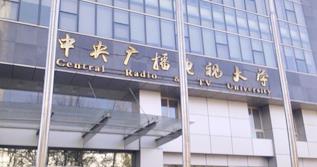 From 6th February 1979 when China Central Radio and TV University (CCRTVU) was established to July 2012 when the Open University of China (OUC) was unveiled, the radio and TV universities (RTVUs) have grown larger and stronger, formulating a school network including the CCRTVU, 44 provincial-level RTVUs, 1,000 prefectural-level RTVUs, and nearly 2,000 county-level RTVUs. The number of active students has exceeded several million, the largest in the world.
From 6th February 1979 when China Central Radio and TV University (CCRTVU) was established to July 2012 when the Open University of China (OUC) was unveiled, the radio and TV universities (RTVUs) have grown larger and stronger, formulating a school network including the CCRTVU, 44 provincial-level RTVUs, 1,000 prefectural-level RTVUs, and nearly 2,000 county-level RTVUs. The number of active students has exceeded several million, the largest in the world.
Over decades of development, the RTVUs have developed a large number of talented professionals to serve China’s economic construction and social development, provided a great many learners with the opportunity to receive higher education, and made great contributions to improving the quality and capacity of workers.

Over the past 30 years, the RTVUs have gone through the three different stages.
Establishment and development (1979-1989): This was the very first stage. The main task at this stage was to explore the RTVUs’ distinctive development path and the construction of a learner development model, majors and disciplines, and a curriculum system. Efforts were stepped up to develop degree education oriented to all on-the-job employees to expand higher education enrolment, to find a way for the tens of thousands of young people affected by the 10-year Cultural Revolution to receive higher education, and to solve China’s talent shortage. In 1979, about 417,000 students were admitted to RTVUs nationwide, including 115,000 students choosing to study all subjects and 302,000 students choosing to study a single subject. In addition, there were about 100,000 more probationers and students in the branch schools all over China. From 1979 to 1989, the RTVUS admitted a total of 1.61 million degree students, of whom 1.04 million qualified for gradation, and 2 million non-degree education students who completed their learning. The annual number of RTVU degree education graduates accounted for an average of 17.1 percent of the national total.
Widespread exploration (1990-1998): With the recovery and development of China’s economy and society, the reform of economic and educational systems also deepened. Notably, with the transition of the economic system from a planned to a market economy and the formulation and implementation of the National Outline for Education Reform and Development, in response, the RTVUs entered a stage of exploration. At this stage, the RTVUs were tasked with exploring the operations of the universities at multiple levels from multiple channels, focusing on the transition from semi-closed school operation to open operation, from single junior college level degree education to multi-functional education, and from full or part-time learning to spare-time learning. Further educational trials were held for a self-taught audio-visual system, undergraduate programmes starting at junior college level, and junior college foundation courses. The cultivation and training of talented professionals oriented to rural areas and the grassroots level was explored. Quality education resources were integrated to provide television courses or programmes to rural technicians, educated youth returning to the rural areas, township enterprise staff, and farmers. The same quality resources were used to popularise agricultural science and technology, and management knowledge, and to improve the cultural and technological quality of the rural labour force. Explorations into education and teaching modernisation were made, in order to adapt to the development of modern information technology. The founding of China RTVU Computer Network Association and CAI Courseware Development and Production Association, and the building of the live TV classrooms, multimedia online classrooms, and the multimedia research and development centre are also measures aimed at driving the continuous development of the RTVU’s education “modernisation”.
Open education (1999-2012): By the end of the 20th century, both national economic and social development and higher education development had entered a new historical period. In order to meet international and domestic development needs, the CPC Central Committee and the State Council convened the Third National Working Conference on Education, promulgated The Action Plan to Revitalise Education Towards the 21st Century, and proposed the “Implementation of Modern Distance Education” Programme. In April 1999, the Ministry of Education issued Several Opinions On the Project Research Work of the CCRTVU Pilot Programme for the Reform of the Learner Development Model and Open Education and specified that it was necessary “to explore the RTVU’s basic framework of learner development for junior college education and undergraduate education for junior college graduates as well as the corresponding teaching model, management model, and operation mechanism under the conditions of modern open distance education, so as to train a group of practical, high quality practical professionals that meet local needs for economic construction and social development at the grassroots level.” The pilot contents included examination-free entry, preferred registration, enrolment of on-the-job employees and young people in the society who completed the schooling of regular junior middle schools, vocational middle school and the equivalent. The students could choose printed materials, radio (recordings), TV (videos), CAI courseware, learning websites, and other media to teach themselves in line with their own needs, with teachers giving face-to-face and other learning support as necessary. From 1999 to 2010, the RTVUs enrolled a total of 6.438 million students with 3.2583 million graduates. Open education has facilitated the popularisation of higher education in China, advanced the building and sharing of quality education and teaching resources, and formulated a basic framework for an open learning formation model with Chinese characteristics, as well as a new quality assurance mechanism for the learner development model under distance and open education conditions.
(This article is written based on relevant materials in China Higher Education.)
By Yan Jingzhen, www.china.org.cn